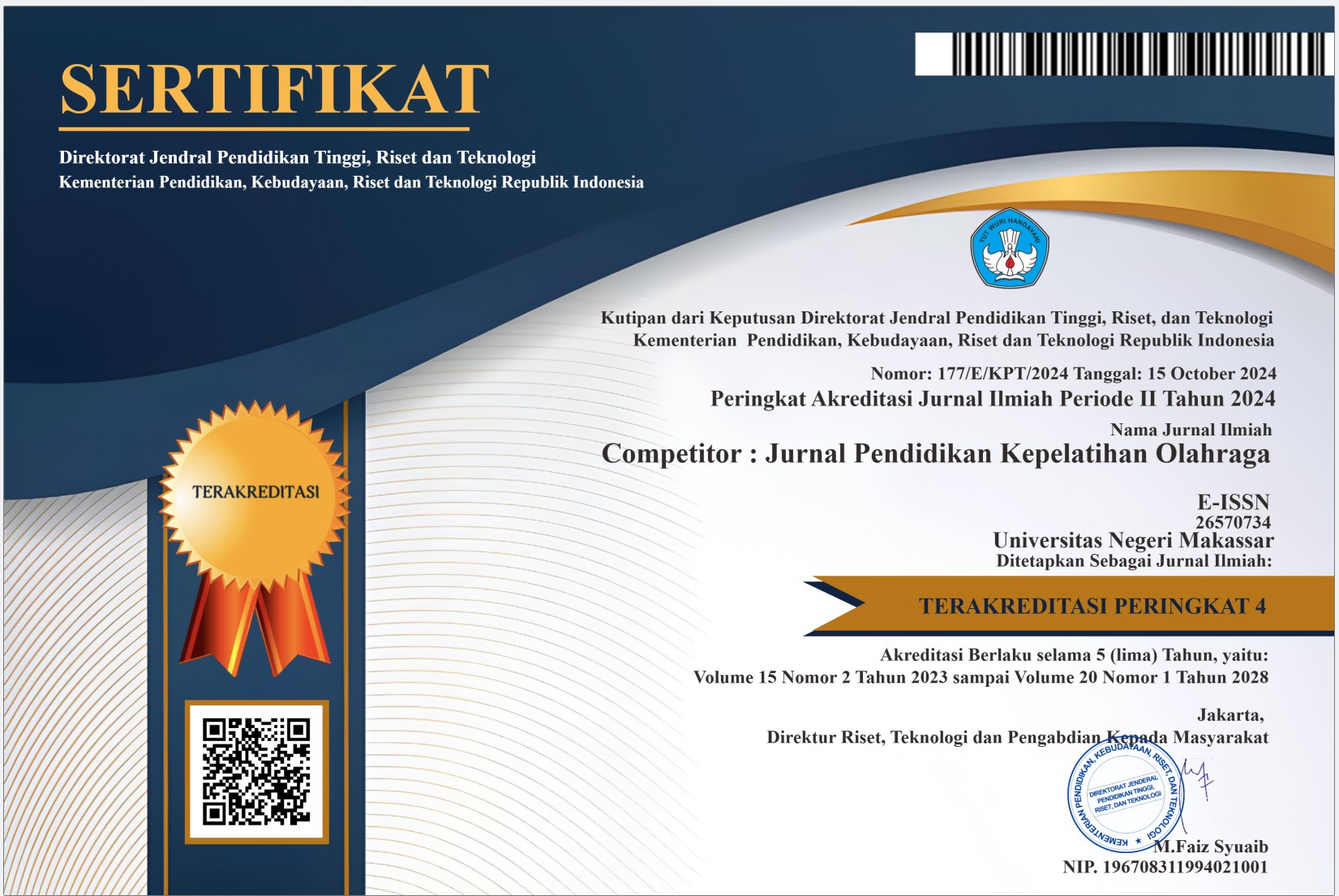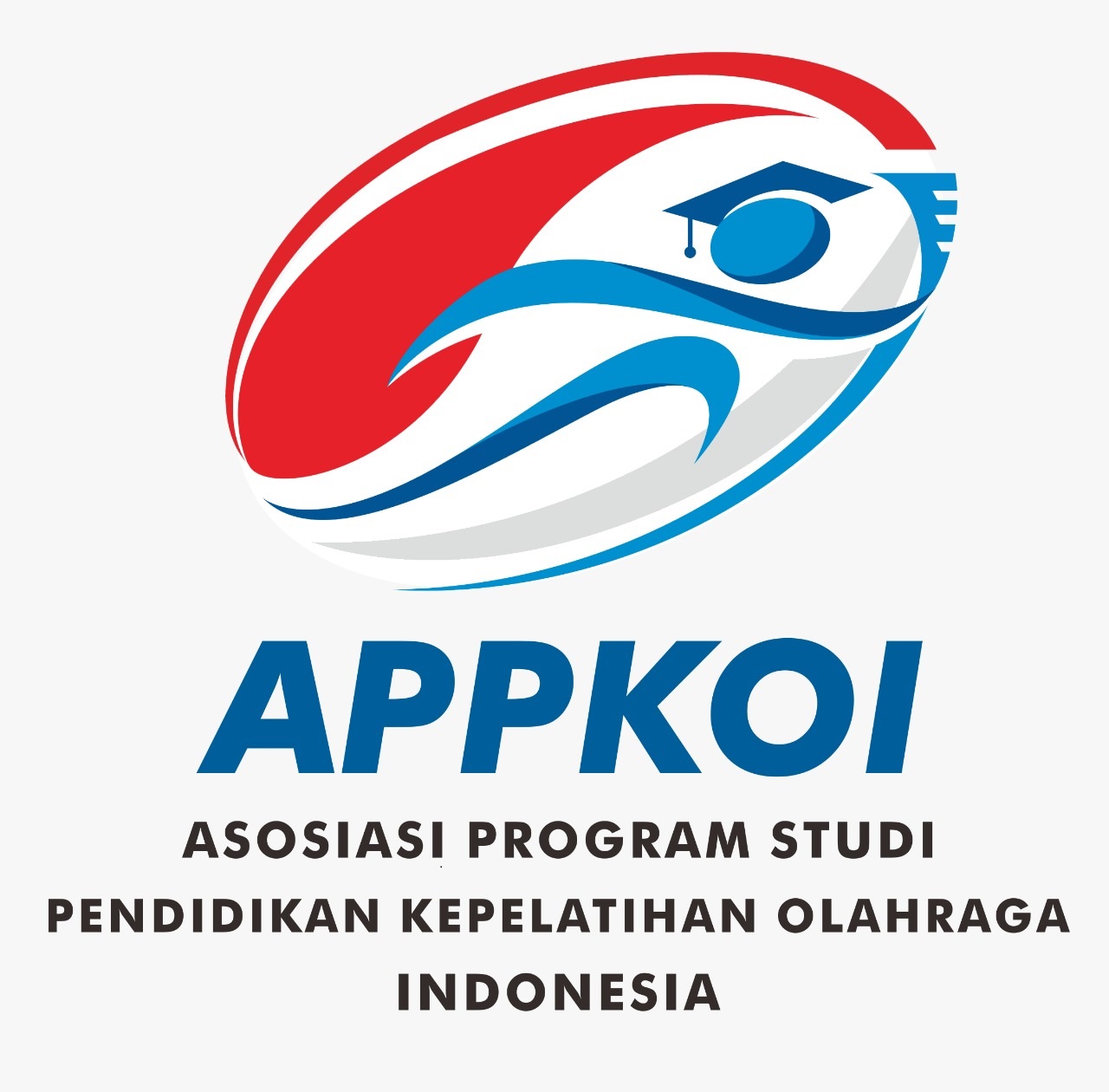Survey Of Physical Fitness Levels In Sports Education Students, STKIP PGRI Bangkalan
DOI:
https://doi.org/10.26858/cjpko.v17i2.289Kata Kunci:
Survey; Physical Fitness; Students; Sports Education; Physical Components.Abstrak
This study aims to determine the level of physical fitness of male students of the Physical Education, Health and Recreation Study Program of STKIP PGRI Bangkalan class of 2022. A total of 25 students were purposively selected as samples, namely those who actively participated in sports practice activities and were considered to represent the general physical fitness condition of students. The method used was a survey with data collection through a series of physical fitness tests, which included endurance components (12-minute run), muscle strength (push-ups and sit-ups), speed (30-meter run), agility (shuttle run), and flexibility (sit and reach). The results showed that most students were in the good physical fitness category (56%), followed by the fair category (24%), very good (12%), and less (8%). The average test results showed that endurance, muscle strength, and speed were in the good category, while agility and flexibility were moderate. These findings indicate that the students' physical fitness level is generally good, but special attention is needed to develop agility and flexibility through a more specific training program.
Referensi
Asdar, M. (2019). Survei Tingkat Kebugaran Jasmani Atlet pada Club Atletik FIK UNM. Universitas Negeri Makassar.
Asnaldi, A. (2020). Hubungan Kelentukan dan Daya Ledak Otot Lengan Terhadap Ketepatan Smash Bolavoli. PHYSICAL ACTIVITY JOURNAL (PAJU), 160-175.
Asri, N., Nurajab, E., Nur, Y. M., & Agustiawan, A. (2021). Peran Olahraga Pendidikan dalam Meningkatkan Prestasi Olahraga. Universitas Mitra Karya, Indonesia, STKIP Pasundan Cimahi, Indonesia, Sekolah Dasar Negeri 60 Tondon, Indonesia, Universitas Mitra Karya, Indonesia.
Asril. (2021). Tingkat Kesegaran Jasmani Siswa Ekstrakurikuler Pencak Silat Tapak Suci SMA N 2 Bangko Pusako Kabupaten Rokan Hilir. Universitas Islam Riau.
Astuti, T. W., & Payung, M. V. B. (2025). Evaluasi tingkat kebugaran jasmani mahasiswa pendidikan olahraga di Universitas Quality Berastagi. Jurnal Ilmiah Aquinas, 8(1), 133–137.
Dhuha, A., et al. (2023). Pengaruh gaya hidup sedentari terhadap kebugaran jasmani mahasiswa. Jurnal Ilmu Keolahragaan dan Kesehatan, 4(2), 45–52.
Gunawan, F. Y. (2021). Tingkat Kesegaran Jasmani Siswa Ektrakurikuler Bola Voli SMA Negeri 1 Kecamatan Bunut Kabupaten Pelalawan. Universitas Islam Riau.
Setiawan, F. E., Putri L., F., & Sofia, A. (2023). Korelasi status gizi dan aktivitas fisik dengan tingkat kebugaran jasmani mahasiswa. Jurnal Olahraga dan Kesehatan Indonesia (JOKI), 2(2).
Sukartidana, I. N., & Anam, K. (2025). Hubungan aktivitas fisik dan tingkat kebugaran jasmani pada mahasiswa PJKR. Jurnal Pendidikan Jasmani, Kesehatan, dan Rekreasi, 3(1), 12–20.
Weda. (2021). Peran Kondisi Fisik dalam Sepakbola. Jurnal Pendidikan Kesehatan Rekreasi, 186-192.
Zulrafli, Turimin, & Muspita. (2013). Kontribusi Tingkat Kesegaran Jasmani Dan Motivasi. Universitas Islam Riau.
Unduhan
Diterbitkan
Terbitan
Bagian
Lisensi
Hak Cipta (c) 2025 Basir, Heni Yuli handayani, Haryo Mukti Widodo (Author)

Artikel ini berlisensi Creative Commons Attribution 4.0 International License.





















